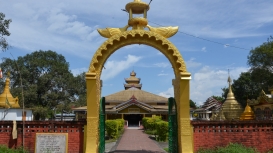Arunachal Pradesh, situated in the northeastern periphery of India, is a prominent Buddhist state. Buddhism reached Arunachal from Tibet and Southeast Asia in the early and late medieval period and continues to be a living religious culture with numerous Buddhist communities scattered across the state. The rich Buddhist art and culture of these communities is visible in their architecture, sculptures, crafts, festivals, rituals and performance arts.
While the Tibetan form of Mahayana Buddhism is practised in western Arunachal Pradesh, the Burmese form of Theravada Buddhism is in practice in the southeastern part of the state. Arunachal Pradesh is famous as the birthplace of the sixth Dalai Lama, the spiritual head of Tibetan Buddhism, hence, art and culture of the Tibetan tradition is primarily known and documented, while the Theravada Buddhist culture of the state remains underrepresented.
Theravada Buddhism was bought to Arunachal Pradesh by the migratory groups of Southeast Asia between the thirteenth and eighteenth centuries; these groups later settled mainly in Changlang and the newly formed Namsai district (which was earlier a part of Lohit district). Several Buddhist monasteries are spread across these two districts exhibiting the rich Theravada art and architecture of the state. These monasteries are the centre of religious and cultural activities of the Theravada Buddhist communities of Arunachal Pradesh.


